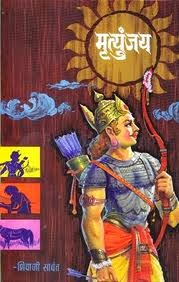Ayurveda Museum
 |
| That's me at the entrance of the museum |
Regarded as an upaveda (subsidiary), the knowledge
of Ayurveda is firmly rooted in the millennia old Vedic knowledge systems.
Hence, Ayurveda is the oldest form of healthcare in the world. Simply put,
Ayurveda means the science of life which by itself is a system of holistic
medicine by achieving a perfect balance between man and nature, thus furthering
the ideals promoted by Indian culture. The inception of Ayurveda in Kerala is
roughly dated to the time when Lord Parasurama, the sixth avatar of Vishnu roped
in the Ashtavaidyan families to preserve and disseminate the knowledge by
maintaining its purity.
 |
| A bird's eye of the Ayurveda Museum (Pic Courtesy: Ayurveda Museum) |
 |
| Diorama Presentations (Pic Courtesy: Ayurveda Museum) |
Housed in an old traditional spacious two storied
main building, built in the traditional architectural style of Kerala, the walk
around the museum begins with a short introductory video that depicts the
origins, growth and development of Ayurveda in an audio-visual theatre.
Visitors are then taken on a leisurely stroll to observe diorama presentations
which map the history of Ayurveda from the mythological to the modern age. In
each of them, there are presentations referring to kayachikitsa (general
medicine), balachikitsa (paediatrics), grahachikitsa (psychiatry),
oordhvangachikitsa (ophthalmology and ENT treatments), salyachikitsa (surgery),
damshtrachikitsa (clinical toxicology), jarachikitsa (rejuvenation therapy) and
vrushachikitsa (reproductive medicine).
As one walks further into the first floor, the
evolution of Ayurveda is narrated using a slew of media such as artifacts, sculptures,
scriptures and pictures. A pleasant and unexpected surprise is a 3D gallery. These
developments narrate the manufacturing process of Ayurvedic medicines and
treatment techniques that have been evolved and prescribed over the years. The
museum also houses sculptures of Dhanavantri, Adi Sankaracharya, Lord Buddha, Acharya
Vagbhatta among others. The museum also has procedures of Ayurveda along with
local specialities that have been followed in the previous years while also developing
initiatives to preserve the science for future generations.
With a rich and diverse collection of rare manuscripts,
books and documents along with scriptures which were used by the traditional
Ashtavaidyans of Kerala, a digital library stocked adequately with a huge CD
collection based on ayurveda, the museum owes much of its immortal
contributions to the Ashtavaidyan Eledath Thaikkattu Mooss family, a part of
which is also narrated in the Aithihyamala, which is a collection of century
old stories from Kerala. This leads us to the conclusion that the museum is a
tribute to the highly revered Ayurveda gurus.
A visit to Ollur or nearby Thrissur would be incomplete
without a stopover at the Ayurveda Museum, thanks to the ardent endeavour of
the Vaidyaratnam Group of Institutions. The various modalities of Ayurveda
which have been observed in the years gone by and the modern age are granted a
new lease of life here. For its importance in promoting medical tourism to
presenting a cache of rare antiquities, the Ayurveda Museum communicates the
rich history about India’s tryst with medical science.


Comments